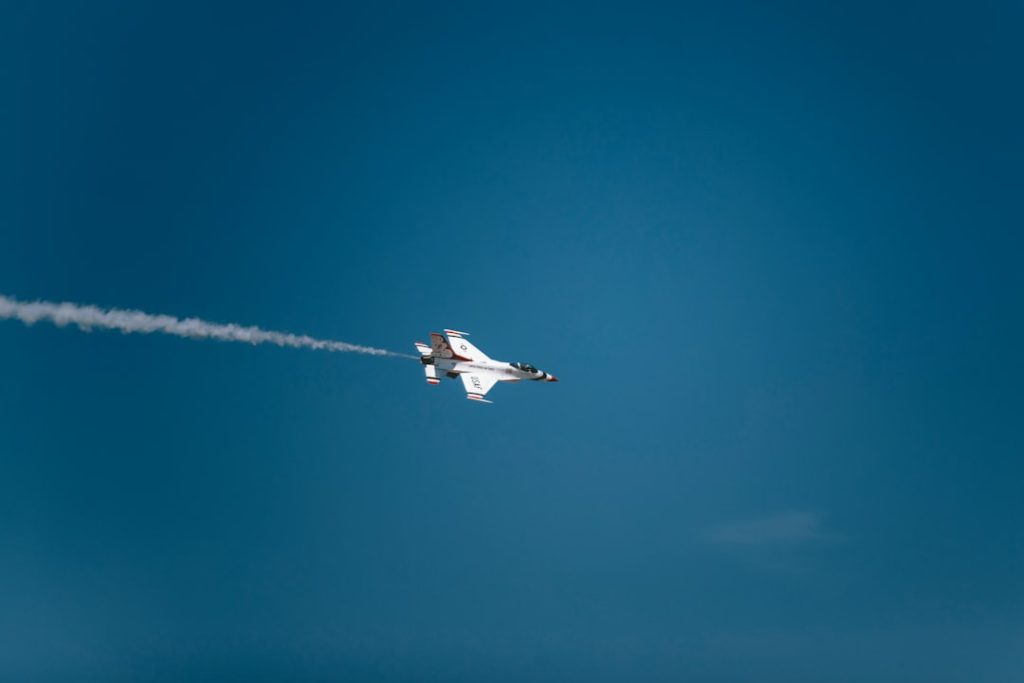The aerospace industry is undergoing a significant transformation with the rise of electric propulsion systems, which promise to revolutionize how aircraft are powered and operated. Electric propulsion offers numerous advantages over traditional fossil fuel-based systems, including reduced emissions, lower operating costs, and enhanced efficiency. The shift towards electric propulsion is driven by a combination of regulatory pressures, environmental concerns, and advancements in battery technology.
For instance, the European Union has set ambitious targets for reducing greenhouse gas emissions from aviation, prompting manufacturers to explore electric and hybrid-electric solutions as viable alternatives to conventional jet engines. Several companies are at the forefront of developing electric propulsion systems. One notable example is the collaboration between Airbus and Siemens, which aims to create a hybrid-electric aircraft capable of flying short-haul routes with significantly lower carbon footprints.
Their E-Fan X project is a testament to the potential of electric propulsion, featuring a modified BAe 146 aircraft equipped with a hybrid system that combines a gas turbine with electric motors. This initiative not only showcases the feasibility of electric flight but also serves as a platform for testing new technologies that could be scaled for commercial use in the future. As battery technology continues to improve, with advancements in energy density and charging times, the dream of fully electric commercial air travel is becoming increasingly attainable.
Key Takeaways
- Electric propulsion systems are gaining popularity in aerospace for their efficiency and environmental benefits.
- Advancements in materials and manufacturing processes are leading to lighter and stronger aerospace components.
- Artificial intelligence and automation are revolutionizing aerospace operations, improving safety and efficiency.
- Space tourism and commercial space travel are becoming increasingly important in the aerospace industry.
- Innovations in satellite technology and small satellite launch systems are expanding the capabilities of space exploration.
Advancements in Materials and Manufacturing Processes
The aerospace sector has always been at the cutting edge of materials science and manufacturing processes, and recent advancements are pushing the boundaries even further. Lightweight materials such as carbon fiber reinforced polymers (CFRP) and titanium alloys are increasingly being utilized to enhance aircraft performance while reducing weight. These materials not only contribute to fuel efficiency but also improve the overall structural integrity of aircraft.
For example, the Boeing 787 Dreamliner incorporates approximately 50% composite materials, which significantly reduces its weight compared to traditional aluminum structures, leading to lower fuel consumption and operational costs. In addition to material innovations, advancements in manufacturing processes such as additive manufacturing (3D printing) are transforming how aerospace components are produced. This technology allows for the creation of complex geometries that were previously impossible or prohibitively expensive to manufacture using traditional methods.
Companies like GE Aviation have embraced 3D printing to produce critical engine components, resulting in lighter parts that can withstand extreme temperatures and pressures. The ability to rapidly prototype and produce parts on-demand not only streamlines supply chains but also enables more sustainable practices by minimizing waste and reducing the need for extensive inventories.
The Impact of Artificial Intelligence and Automation in Aerospace

Artificial intelligence (AI) and automation are reshaping the aerospace industry by enhancing operational efficiency, safety, and decision-making processes. AI algorithms are being employed to analyze vast amounts of data generated by aircraft systems, enabling predictive maintenance that can identify potential issues before they lead to failures. For instance, airlines are increasingly using AI-driven analytics to monitor engine performance in real-time, allowing for timely interventions that can prevent costly repairs and minimize downtime.
Moreover, automation is playing a crucial role in improving flight operations and air traffic management. Advanced autopilot systems equipped with AI capabilities can assist pilots in navigating complex airspace, optimizing flight paths, and managing fuel consumption more effectively. The integration of AI into air traffic control systems is also enhancing safety by providing real-time data analysis that helps manage congestion and reduce delays.
As these technologies continue to evolve, they promise to create a more efficient and safer aviation ecosystem.
The Growing Importance of Space Tourism and Commercial Space Travel
| Metrics | 2010 | 2020 | 2030 (projected) |
|---|---|---|---|
| Number of space tourists | 7 | 8 | 100+ |
| Revenue generated from space tourism (in billions) | 0.2 | 0.5 | 10+ |
| Number of commercial space travel companies | 2 | 10 | 20+ |
| Investment in commercial space travel (in billions) | 1 | 5 | 20+ |
Space tourism is emerging as a new frontier in the aerospace industry, driven by advancements in technology and a growing interest among private individuals to experience space travel. Companies like SpaceX, Blue Origin, and Virgin Galactic are leading the charge in making space accessible to non-professional astronauts. Blue Origin’s New Shepard spacecraft has successfully completed multiple suborbital flights, allowing passengers to experience a few minutes of weightlessness while enjoying breathtaking views of Earth from space.
The commercial space travel market is not limited to suborbital flights; it also encompasses orbital missions and even plans for lunar tourism. SpaceX’s Crew Dragon spacecraft has already transported astronauts to the International Space Station (ISS) as part of NASA’s Commercial Crew Program, paving the way for future commercial missions that could include private citizens. The potential for space tourism extends beyond mere adventure; it also opens up opportunities for scientific research and technological development in microgravity environments.
As infrastructure for space travel continues to develop, including spaceports and orbital hotels, the dream of vacationing in space may soon become a reality for many.
Innovations in Satellite Technology and Small Satellite Launch Systems
The satellite industry is experiencing rapid innovation driven by advancements in technology and an increasing demand for satellite services. Small satellites, or smallsats, have gained popularity due to their cost-effectiveness and versatility. These compact satellites can be deployed for various applications, including Earth observation, telecommunications, and scientific research.
Companies like Planet Labs have successfully launched fleets of smallsats that provide high-resolution imagery of the Earth’s surface, enabling applications ranging from agriculture monitoring to disaster response. The development of small satellite launch systems has also transformed access to space. Traditional launch vehicles often come with high costs and lengthy timelines, making it challenging for smaller companies or research institutions to deploy their satellites.
However, dedicated small satellite launch providers like Rocket Lab and Astra have emerged, offering more affordable and flexible launch options tailored specifically for smallsats. This democratization of access to space is fostering innovation across various sectors as organizations can now leverage satellite technology without the prohibitive costs associated with larger missions.
The Role of 3D Printing in Aerospace Innovation

3D printing has emerged as a game-changing technology in aerospace innovation, offering unprecedented design flexibility and efficiency in manufacturing processes. This additive manufacturing technique allows engineers to create complex geometries that traditional subtractive methods cannot achieve. For instance, NASA has utilized 3D printing to produce rocket engine components that are lighter yet stronger than their conventionally manufactured counterparts.
The ability to print parts on-demand also reduces lead times significantly, enabling rapid prototyping and iterative design processes. Furthermore, 3D printing contributes to sustainability efforts within the aerospace industry by minimizing material waste. Traditional manufacturing often involves cutting away excess material from larger blocks, resulting in significant waste.
In contrast, 3D printing builds components layer by layer, using only the necessary material required for each part. This not only reduces waste but also lowers production costs over time. As aerospace companies continue to explore new applications for 3D printing—from producing cabin interiors to creating entire aircraft structures—the technology is poised to play an increasingly vital role in shaping the future of aviation.
The Development of Sustainable and Eco-Friendly Aerospace Technologies
Sustainability has become a central focus within the aerospace industry as stakeholders recognize the urgent need to address environmental challenges associated with aviation. The development of sustainable aviation fuels (SAFs) represents one of the most promising avenues for reducing carbon emissions from aircraft operations. SAFs are produced from renewable resources such as plant materials or waste oils and can be blended with conventional jet fuels without requiring significant modifications to existing engines or infrastructure.
Airlines like KLM and United Airlines have already begun incorporating SAFs into their operations as part of their commitment to achieving net-zero emissions. In addition to alternative fuels, manufacturers are exploring innovative designs that enhance aerodynamic efficiency and reduce fuel consumption. Concepts such as blended wing body designs or ultra-efficient turbofan engines aim to minimize drag while maximizing lift during flight.
Furthermore, initiatives like the Sustainable Aviation Initiative (SAI) bring together industry leaders to collaborate on research and development efforts focused on creating eco-friendly technologies that can be implemented across the aviation sector. As regulatory frameworks evolve and consumer demand for sustainable practices increases, the aerospace industry is poised to embrace a greener future.
The Integration of Blockchain and IoT in Aerospace Operations
The integration of blockchain technology and the Internet of Things (IoT) is revolutionizing aerospace operations by enhancing transparency, security, and efficiency across various processes. Blockchain’s decentralized ledger system provides an immutable record of transactions that can be utilized for tracking aircraft maintenance history, supply chain management, and even passenger data security. For instance, airlines can leverage blockchain technology to create tamper-proof records of maintenance activities, ensuring compliance with regulatory requirements while enhancing safety.
IoT devices play a crucial role in collecting real-time data from aircraft systems, enabling predictive maintenance and operational optimization. Sensors embedded within aircraft can monitor various parameters such as engine performance, fuel consumption, and environmental conditions during flight. This data can be transmitted securely via blockchain networks to provide stakeholders with actionable insights that improve decision-making processes.
By combining IoT capabilities with blockchain’s security features, aerospace companies can create more resilient operations that respond proactively to challenges while maintaining high standards of safety and reliability. The convergence of these technologies represents a significant shift towards more interconnected and efficient aerospace operations. As the industry continues to embrace digital transformation, the potential for enhanced collaboration among stakeholders—from manufacturers to airlines—will drive innovation and improve overall performance across the sector.


